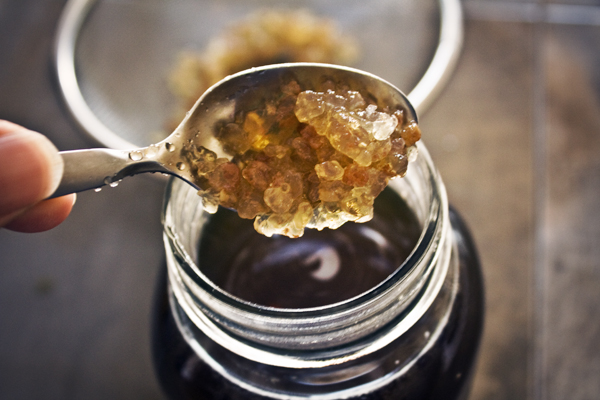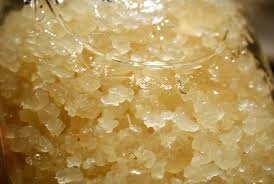 The important role of the bacterial “tenants” that live in our gut is becoming more and more understood. And with it, the reasons why we should remember to feed them when we feed ourselves.
The important role of the bacterial “tenants” that live in our gut is becoming more and more understood. And with it, the reasons why we should remember to feed them when we feed ourselves.
With bacterial cells outnumbering our human cells 10 to 1 (yes, that means our body contains only 10% human!), it is vital that we look after these organisms, even if we haven’t yet fully realised the influence that they have on our immune system, cardiovascular system, weight, mood and digestive system. These friendly creatures and their by-products keep pathogens at bay, guard against infectious illness and aid in the best digestion of the foods we consume.
There are plenty of “probiotics” (a substance which stimulates the growth of microorganisms, especially those with beneficial properties) on the market, but an emerging culture (excuse the pun) amongst foodies is to change the composition of the bacteria in our gut through the foods that we eat. A lot of these foods have been used by traditional cultures as a way of getting the most nutrition from food by releasing nutrients from the food, and also ensuring extended shelf life. These include foods such as sauerkraut, kimchi, natto, sourdough, pickled vegetables, pickled herring, buttermilk, and yoghurt.
I was recently introduced into the world of water kefir, which uses kefir grains (tibicos), also called a SCOBY (Symbiotic Colony of Bacteria and Yeast) to produce a lightly carbonated, fermented drink. Kefir Grains consist of bacteria and yeast existing in a symbiotic relationship. They consume the added sugar in the water to produce a variety of beneficial acids, B vitamins, food enzymes and more beneficial bacteria. Kefir grains designed to ferment milk products are also available and they produce something that tastes similar to yoghurt. For those who do not want to consume dairy, water kefir is a great alternative to dairy kefir.
Research is still trying to demonstrate the full effect of fermented foods, and which types and how much we need. Fermented drinks like kefir have long, strong histories of consumption around the world. It appears that they offer many health benefits including:
– Stabilising or balancing the gastrointestinal tract
– Better digestion
– Fighting off harmful bacteria, yeasts and viruses
– Stimulating the immune system
– Fewer bowel issues
– Decreased bacterial translocation (when bacteria leave the gut and migrate to other parts of your body and cause illness) by strengthening the barrier of the gut
– Anti-inflammatory effects (especially when ginger is added)
– Prevent and treat urinary tract infections
– Treat irritable bowel syndrome
And it is a great alternative to soft drinks, or for when you are having a sugar craving but want something healthy!
So, now that you are all excited about how fermented foods can help you, where do you start? It is best to learn how to make these at home, as some store-bought products may not be as healthy as you think. For example, sauerkraut should only be bought if it is in the fridge. If it is in the main aisle of the supermarket, they usually use vinegar to give it the acidic flavour instead of the naturally produced flavour from the bacteria.

RECIPE FOR WATER KEFIR
There are many variations of how to produce kefir water online, but I have listed a basic recipe below:
For Initial Fermentation
- 1 large 2.5+L jar
- Nylon or stainless steel sieve
- 1 cup kefir grains (buy online, or look on sites such as Gumtree)
- 1 cup sugar (preferably organic raw/coconut/rapadura/brown sugar as oppose to processed white sugar, or honey which has antibacterial properties and may weaken the kefir)
- ½ an organic lemon (otherwise remove the rind before adding into the mixture)
- 2 litres of water (filtered water (although not one that demineralises the water such as a Brita filter), spring water or boiled water that has been cooled)
- Extra: one organically grown, dry fig or unsulphured dried fruit.
For Secondary Fermentation
- 1 cup juice OR 2-4 tablespoons of organic cane sugar
How to Make the Magic Happen…
- Dissolve sugar in the water, and then add the remaining ingredients including the kefir grains.
- Cover the jar and let stand for 1 to 2 days at room temperature.
- When the liquid has produced the desired flavour, strain the water kefir by pouring the liquid into a flip top, airtight bottle (if you want to double ferment the drink) or into a pitcher.
- Discard the fruit, but keep the kefir grains which can be immediately re-cultured.
- The water kefir can be enjoyed as is, or flavoured. It can also be fermented a second time using a tightly capped bottle.
- Pour either the juice or organic sugar into the flip-top, capped bottle and let sit on the countertop for 18-24 hours.
- Transfer the bottle for 2-3 days to let the gas settle, and then open carefully over the sink in case the bubbles cause the kefir to fizz and foam!
When planning on adding fermented products like kefir into your diet, bear in mind that you are still adding bacteria to your gut, which may initially cause symptoms such as bloating, stomach cramps or diarrhoea as your gut adjusts. These issues should resolve themselves within a few days though. Introduce the foods slowly if you feel that you may react to too many changes at once. If you have issues, start with a couple of tablespoons a day, and then introduce this by one or two tablespoons a day until you can tolerate a cup without any discomfort.
Comment below with any fermentation success (or failure!) stories, or any suggestions of what to flavour the kefir water with!
…
THANK YOU to our wonderful dietitian Renee for writing this fabulous article about Kefir. I know everybody is going to get a ‘good gut feeling’ about this one (had to throw a gut joke in there!)
Julie xo
